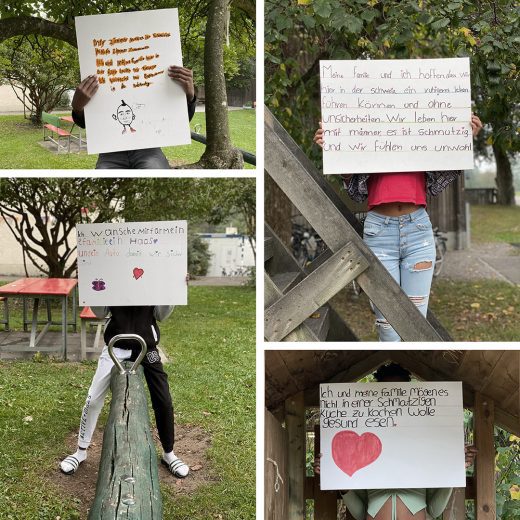recognise and understand the purpose of the images.
Images are extremely important for Save the Children. They serve as the link between people who want to help and the children we work with and for. Images create empathy, understanding and motivate people to act. We are aware of the huge responsibility we have towards the children and their families who allow us to tell their stories. For a long time now, we have been reflecting on how to embed sensitivity, integrity, cooperation, and above all, dignity into our work every day.
Jamer, 12, is taking a photo with his camera.
Images capture despair and illuminate hope
Responsible use of images
We never act in a way that could jeopardise the welfare or safety of the children who provide us with their images and stories. Our guiding principle for media and communications work is: «Do no harm». Children have the right to tell their own stories. Wherever possible, we give them the chance to describe their experiences in their own words. We also believe it is important not only to highlight suffering and hardship but also to share stories of resilience and new beginnings.
The images we use must be created responsibly, respecting the rights and priorities of children. Much of this is already happening, but not everywhere and not always. Therefore, we must continually adapt our guidelines, principles and procedures. We need to find ways to ensure that the children
have the autonomy to choose whether they wish to be photographed or not.
have the opportunity to express their preferences and concerns about the ways they are portrayed.
have the opportunity to express themselves and tell the stories that are important to them.
National Programmes: Why we don’t show children
Save the Children Switzerland tells real stories about real people. This principle is central to our mission. Behind every picture are individuals with unique stories, which we share with the utmost care and sensitivity.
In Switzerland, we place a strong emphasis on protecting children and safeguarding their privacy. That is why we do not publish in our communications any pictures of the children we work with in Swiss asylum centres. We aim to honour their identities beyond the context of being in an asylum facility. Escaping from difficult circumstances and living in an asylum centre are only part of their stories. In the future, they want to be part of society, get an education, work and perhaps start families of their own.
They should be able to decide for themselves if and when they tell their classmates, their employers or their neighbours about their childhood in an asylum centre.

That is why we do not show photos of faces or state full names and locations. Once something is on the internet, it is often impossible to erase it completely. We strongly believe it is possible to highlight the issues faced by children in asylum centres without showing their faces. Our goal is to amplify the voices of children, ensuring their needs and desires are heard loud and clear while respecting their anonymity.
We are committed to ensuring that all children in Switzerland have the same opportunities, regardless of their origin or residence status. That is why we consciously choose to protect their identity and privacy while telling their stories and advocating for their rights.
